-
 Bitcoin
Bitcoin $114000
0.88% -
 Ethereum
Ethereum $3484
1.43% -
 XRP
XRP $2.908
2.54% -
 Tether USDt
Tether USDt $0.0000
0.03% -
 BNB
BNB $750.7
0.89% -
 Solana
Solana $162.0
1.01% -
 USDC
USDC $0.9998
0.01% -
 TRON
TRON $0.3257
1.53% -
 Dogecoin
Dogecoin $0.1993
2.48% -
 Cardano
Cardano $0.7264
4.07% -
 Hyperliquid
Hyperliquid $38.33
2.79% -
 Stellar
Stellar $0.3986
7.87% -
 Sui
Sui $3.417
2.30% -
 Chainlink
Chainlink $16.24
3.45% -
 Bitcoin Cash
Bitcoin Cash $541.5
2.34% -
 Hedera
Hedera $0.2480
7.63% -
 Ethena USDe
Ethena USDe $1.001
0.05% -
 Avalanche
Avalanche $21.36
1.47% -
 Toncoin
Toncoin $3.631
0.03% -
 Litecoin
Litecoin $109.3
4.09% -
 UNUS SED LEO
UNUS SED LEO $8.954
-0.06% -
 Shiba Inu
Shiba Inu $0.00001220
2.91% -
 Polkadot
Polkadot $3.587
2.62% -
 Uniswap
Uniswap $9.139
3.54% -
 Monero
Monero $299.3
2.17% -
 Dai
Dai $1.000
0.01% -
 Bitget Token
Bitget Token $4.335
1.82% -
 Pepe
Pepe $0.00001044
3.27% -
 Cronos
Cronos $0.1336
4.99% -
 Aave
Aave $258.0
3.20%
What is the difference between placing orders and taking orders on Upbit? Are the fees the same?
On Upbit, users can place limit or stop orders to add liquidity or take market or IOC orders to remove it, with fees varying based on trading volume.
May 19, 2025 at 10:28 pm
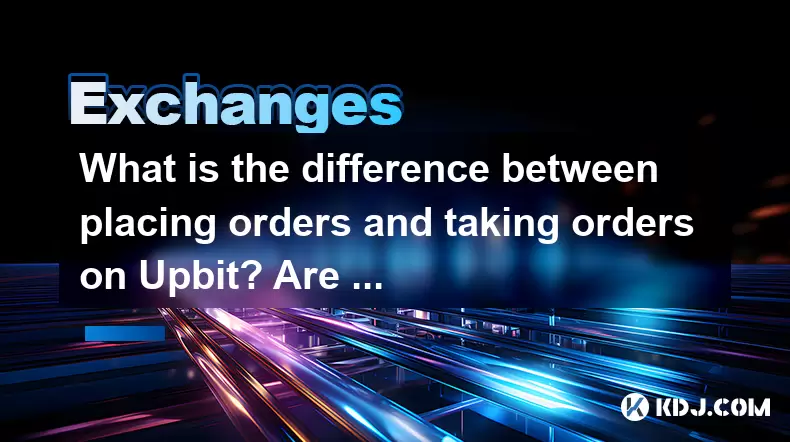
When trading on Upbit, one of the leading cryptocurrency exchanges in South Korea, users can engage in two primary types of order transactions: placing orders and taking orders. Understanding the differences between these two types of orders, as well as the associated fees, is crucial for making informed trading decisions. This article will explore the nuances of placing and taking orders on Upbit, as well as the fee structures associated with each.
Understanding Placing Orders on Upbit
Placing orders on Upbit refers to the action of submitting a buy or sell order to the exchange's order book without it being immediately executed. These orders remain in the order book until they are matched with a corresponding order from another user. Placing orders can be done in two main forms: limit orders and stop orders.
Limit Orders: A limit order allows you to set a specific price at which you are willing to buy or sell a cryptocurrency. For instance, if you want to buy Bitcoin at $30,000, you can place a limit order at that price. The order will only be executed if the market price reaches or falls below $30,000.
Stop Orders: A stop order is used to buy or sell a cryptocurrency once it reaches a certain price, known as the stop price. Once the stop price is reached, the stop order becomes a market order and is executed at the next available price. This type of order is often used to limit losses or protect profits.
When you place an order, you are essentially adding liquidity to the market. Your order remains in the order book until it is matched with a taker's order.
Understanding Taking Orders on Upbit
Taking orders, on the other hand, involves executing an existing order from the order book. When you take an order, you are matching with an order that has already been placed by another user. Taking orders can be done through market orders or immediate-or-cancel (IOC) orders.
Market Orders: A market order is an order to buy or sell a cryptocurrency at the best available current price. When you place a market order, it is immediately executed against the existing orders in the order book. For example, if you want to buy Bitcoin immediately, you can place a market order, and it will be filled at the best available sell price in the order book.
Immediate-or-Cancel (IOC) Orders: An IOC order is an order to buy or sell a cryptocurrency that must be executed immediately. Any portion of the order that cannot be filled immediately is canceled. This type of order is useful for traders who want to ensure that their order is filled as quickly as possible.
When you take an order, you are removing liquidity from the market. Your order is matched with an existing order in the order book, and the transaction is completed immediately.
Fee Structures for Placing and Taking Orders on Upbit
The fees associated with placing and taking orders on Upbit vary depending on the type of order and the user's trading volume. Upbit uses a maker-taker fee model, where makers (those who place orders) and takers (those who take orders) are charged different fees.
Maker Fees: Makers are charged a fee for placing orders that add liquidity to the market. The maker fee on Upbit ranges from 0.05% to 0.25%, depending on the user's 30-day trading volume. Users with higher trading volumes are eligible for lower maker fees.
Taker Fees: Takers are charged a fee for taking orders that remove liquidity from the market. The taker fee on Upbit ranges from 0.08% to 0.25%, depending on the user's 30-day trading volume. Similar to maker fees, users with higher trading volumes are eligible for lower taker fees.
It is important to note that the fees for placing and taking orders are not the same. Taker fees are generally higher than maker fees, as takers are removing liquidity from the market, which can lead to increased volatility.
How to Place an Order on Upbit
To place an order on Upbit, follow these steps:
Log in to your Upbit account: Ensure that you are logged in to your Upbit account and have sufficient funds in your wallet.
Navigate to the trading page: Go to the trading page for the cryptocurrency pair you want to trade. For example, if you want to trade Bitcoin (BTC) against Korean Won (KRW), navigate to the BTC/KRW trading page.
Select the order type: Choose the type of order you want to place, such as a limit order or a stop order.
Enter the order details: Enter the price at which you want to buy or sell the cryptocurrency, as well as the quantity you want to trade.
Review and submit the order: Review the details of your order to ensure they are correct, and then submit the order. The order will be added to the order book and will remain there until it is matched with a taker's order.
How to Take an Order on Upbit
To take an order on Upbit, follow these steps:
Log in to your Upbit account: Ensure that you are logged in to your Upbit account and have sufficient funds in your wallet.
Navigate to the trading page: Go to the trading page for the cryptocurrency pair you want to trade. For example, if you want to trade Bitcoin (BTC) against Korean Won (KRW), navigate to the BTC/KRW trading page.
Select the order type: Choose the type of order you want to take, such as a market order or an immediate-or-cancel (IOC) order.
Enter the order details: Enter the quantity of the cryptocurrency you want to buy or sell. For market orders, you do not need to specify a price, as the order will be executed at the best available price.
Review and submit the order: Review the details of your order to ensure they are correct, and then submit the order. The order will be matched with an existing order in the order book and executed immediately.
Strategies for Using Placing and Taking Orders on Upbit
Understanding the differences between placing and taking orders can help you develop effective trading strategies on Upbit. Here are some strategies to consider:
Using Limit Orders to Place Orders: If you are looking to buy or sell a cryptocurrency at a specific price, using a limit order can help you achieve your desired price. By placing a limit order, you can add liquidity to the market and potentially get a better price than if you were to take an order immediately.
Using Market Orders to Take Orders: If you need to buy or sell a cryptocurrency quickly, using a market order can help you execute your trade immediately. Market orders are useful for traders who prioritize speed over price, as they are filled at the best available price in the order book.
Combining Placing and Taking Orders: Some traders use a combination of placing and taking orders to manage their trades effectively. For example, you might place a limit order to buy a cryptocurrency at a specific price, and then use a market order to sell it once the price reaches your target.
Frequently Asked Questions
Q: Can I cancel a placed order on Upbit?
A: Yes, you can cancel a placed order on Upbit at any time before it is matched with a taker's order. To cancel an order, navigate to the trading page, find the order in the order book, and click the "Cancel" button.
Q: What happens if my placed order is not filled?
A: If your placed order is not filled, it will remain in the order book until it is either matched with a taker's order or canceled by you. You can monitor the status of your order on the trading page.
Q: Are there any minimum or maximum order sizes on Upbit?
A: Upbit has minimum and maximum order sizes that vary depending on the cryptocurrency pair you are trading. You can find the specific order size limits for each pair on the trading page.
Q: Can I place and take orders using the Upbit mobile app?
A: Yes, you can place and take orders using the Upbit mobile app. The app offers the same functionality as the web platform, allowing you to trade on the go.
Disclaimer:info@kdj.com
The information provided is not trading advice. kdj.com does not assume any responsibility for any investments made based on the information provided in this article. Cryptocurrencies are highly volatile and it is highly recommended that you invest with caution after thorough research!
If you believe that the content used on this website infringes your copyright, please contact us immediately (info@kdj.com) and we will delete it promptly.
- Punisher Coin Presale: Your Ticket to 100x Gains in 2025?
- 2025-08-04 00:50:14
- BlockchainFX: The Next Crypto Millionaire Maker After BNB and Tron?
- 2025-08-04 01:10:14
- XRP: Crypto Analyst's Smartest Buy in 2025?
- 2025-08-04 00:30:13
- SEC, Crypto Regulation, and Digital Assets: A New Era?
- 2025-08-04 00:30:13
- Navigating the Meme Coin Mania: Cold Wallets, SHIB, and DOGE in 2025
- 2025-08-03 22:30:16
- Bitcoin's Price Fall and Scrutiny: What's a New Yorker to Think?
- 2025-08-03 22:30:16
Related knowledge

How to set and manage alerts on the Gemini app?
Aug 03,2025 at 11:00am
Understanding the Gemini App Alert SystemThe Gemini app offers users a powerful way to stay informed about their cryptocurrency holdings, price moveme...

What are the websocket feeds available from the Gemini API?
Aug 03,2025 at 07:43pm
Overview of Gemini WebSocket FeedsThe Gemini API provides real-time market data through its WebSocket feeds, enabling developers and traders to receiv...
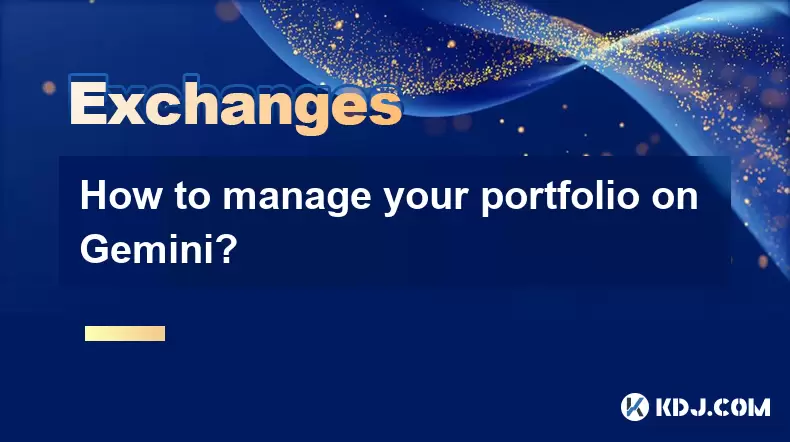
How to manage your portfolio on Gemini?
Aug 03,2025 at 10:36am
Accessing Your Gemini Portfolio DashboardTo begin managing your portfolio on Gemini, you must first log in to your account through the official websit...
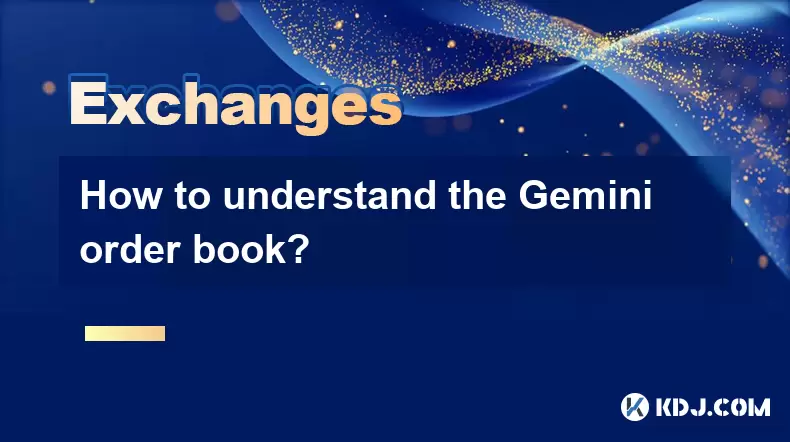
How to understand the Gemini order book?
Aug 02,2025 at 03:35pm
What Is the Gemini Order Book?The Gemini order book is a real-time ledger that displays all open buy and sell orders for a specific cryptocurrency tra...
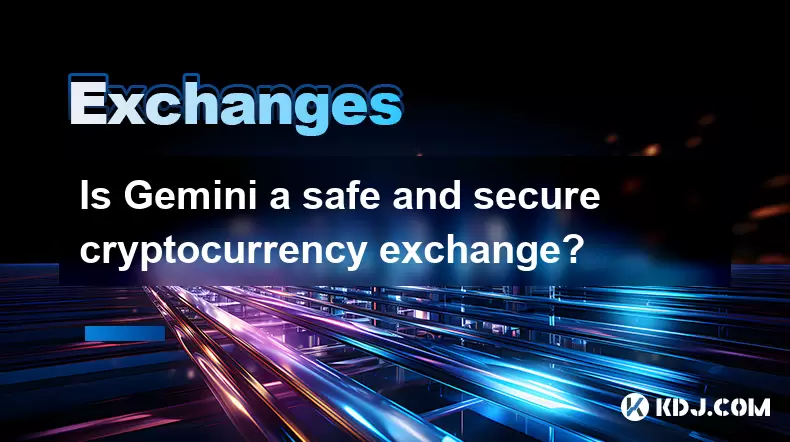
Is Gemini a safe and secure cryptocurrency exchange?
Aug 02,2025 at 10:42pm
Understanding Gemini’s Regulatory ComplianceGemini is a New York State-chartered trust company, which places it under the supervision of the New York ...
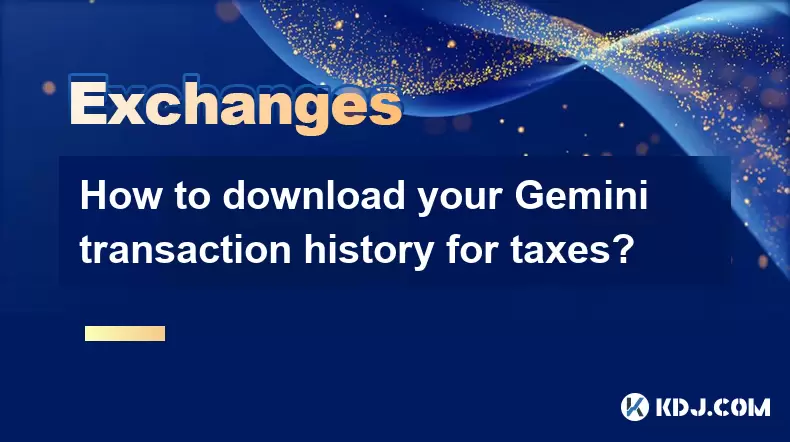
How to download your Gemini transaction history for taxes?
Aug 03,2025 at 09:15am
Understanding Gemini Transaction History for Tax PurposesWhen preparing your cryptocurrency tax filings, having a complete and accurate record of all ...

How to set and manage alerts on the Gemini app?
Aug 03,2025 at 11:00am
Understanding the Gemini App Alert SystemThe Gemini app offers users a powerful way to stay informed about their cryptocurrency holdings, price moveme...

What are the websocket feeds available from the Gemini API?
Aug 03,2025 at 07:43pm
Overview of Gemini WebSocket FeedsThe Gemini API provides real-time market data through its WebSocket feeds, enabling developers and traders to receiv...

How to manage your portfolio on Gemini?
Aug 03,2025 at 10:36am
Accessing Your Gemini Portfolio DashboardTo begin managing your portfolio on Gemini, you must first log in to your account through the official websit...

How to understand the Gemini order book?
Aug 02,2025 at 03:35pm
What Is the Gemini Order Book?The Gemini order book is a real-time ledger that displays all open buy and sell orders for a specific cryptocurrency tra...

Is Gemini a safe and secure cryptocurrency exchange?
Aug 02,2025 at 10:42pm
Understanding Gemini’s Regulatory ComplianceGemini is a New York State-chartered trust company, which places it under the supervision of the New York ...

How to download your Gemini transaction history for taxes?
Aug 03,2025 at 09:15am
Understanding Gemini Transaction History for Tax PurposesWhen preparing your cryptocurrency tax filings, having a complete and accurate record of all ...
See all articles

























































































